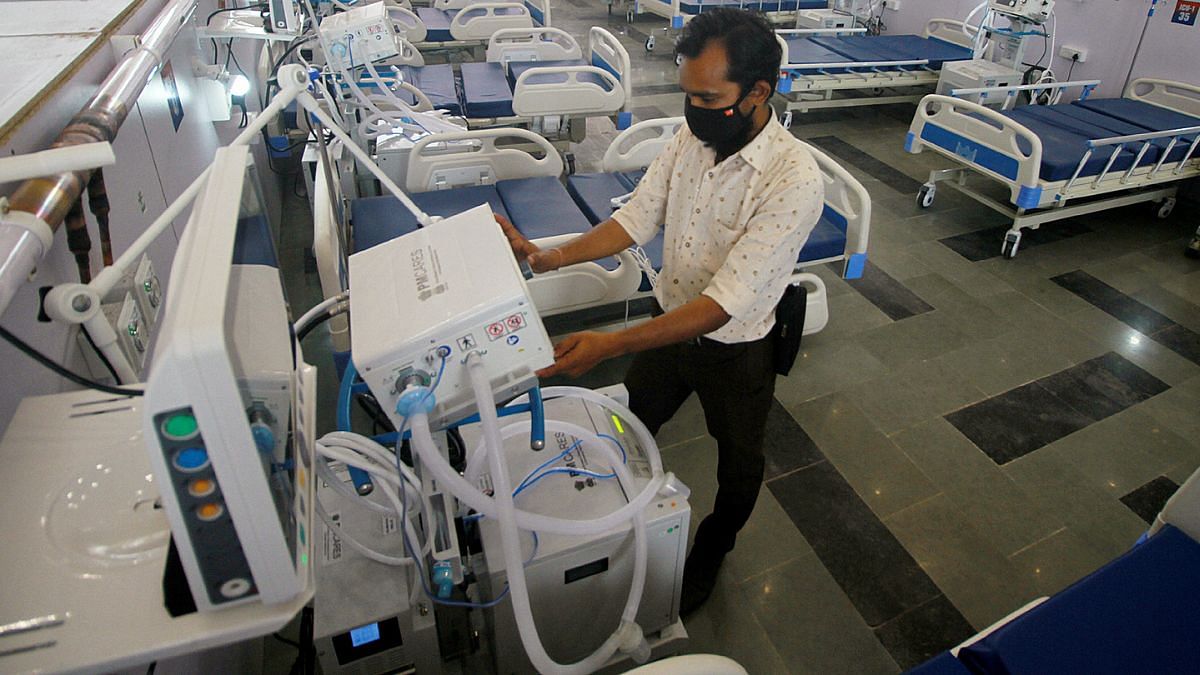New Delhi: The central government is facing pushback from Indian device makers over an order that prunes the list from last year of refurbished medical devices allowed to be imported into the country, but still contains a large number of life-saving equipment already being made in India. Manufacturers hold that the order undermines the Make in India initiative, the local medical device industry, and patient safety.
In an office memorandum (OM) issued on 15 October, reviewed by ThePrint, the Union Ministry of Environment, Forest and Climate Change (MoEF&CC) has revised the list of refurbished equipment that can be imported by hospitals and it now contains 38 high-end and high-value machines. It includes magnetic resonance imaging (MRI) machines, computerised tomography (CT) scanners, mammography mammography systems, radiotherapy machines, and high-end X-ray and robotic surgical systems, among others.
While the decision was based on consultation with the Director General of Health Services (DGHS) in the Union health ministry, the OMs were issued by the MoEF&CC since the import of used devices is also considered a potential environmental hazard.
A similar OM issued last year contained 50 devices and drew protests from the Association of Indian Medical Device Industry (AiMeD), an umbrella association of Indian medical device manufacturers, for the same reasons.
“It’s disappointing that despite our pleas for reviewing the order issued last year, the government has just reduced the list marginally but allowed the continued import of medical devices of possibly obsolete technology that have been discarded by developed countries without any regulatory inspection or verification of performance of equipment to address patients safety concerns,” Rajiv Nath, forum coordinator of AiMeD, told ThePrint.
Ravi Rathod, another senior AiMeD member, stressed that over 90 percent of the devices on the new list are also being made by Indian manufacturers.
According to government sources, the main reason for allowing the import of pre-owned medical devices was to make them affordable for small hospitals and healthcare establishments, especially in tier 2 and tier 3 cities.
Environment Secretary Leena Nadan and DGHS Dr Atul Goel did not respond to phone calls from ThePrint for comment. This report will be updated if and when a response is received.
Also Read: Drug regulator considers making central nod mandatory for all antibiotics in India, even existing ones
‘Risks patient safety’
India-based device makers say that the development is a major setback for domestic manufacturing capabilities and India’s push toward self-sufficiency. Nath said medical equipment worth nearly Rs 70,000 crore is imported into India annually of which nearly one-fourth comprises refurbished medical devices.
Additionally, they have raised concerns over the potential risks to patient safety since refurbished devices may not meet the rigorous quality standards of newly manufactured equipment, further intensifying opposition to the move.
A number of domestic companies that manufacture products similar to those listed on the 2023 OM had made representations to various government departments, detailing their investments, manufacturing capabilities, and employment generation, along with lists of installations in India and overseas.
Their efforts had found support from Department of Pharmaceuticals Secretary Arunish Chawla, who wrote to Nadan in May this year asking for amendments in the 2023 OM in line with demands by Indian device manufacturers. ThePrint has seen a copy of the letter.
It was, therefore, shocking to see a new government order allowing the same products without any consideration of industry requests, AiMeD members told ThePrint.
Additionally, they pointed out, the clause that says “Equipment manufactured in India should not be allowed for import”, which was there in the last OM has also been removed, making way for the import of refurbished products already being manufactured in India.
Rathod said, “On one hand, the government is promoting manufacturing of this equipment though production-linked incentive (PLI) schemes, and, on the other hand, allowing discarded medical devices by developed countries to be lapped up by Indian hospitals.”
In such a scenario, he questioned why hospitals would be interested in buying locally-made products even if they are of standard quality. Refurbished medical devices are often cheaper than newly made equipment. Nath said, refurbished devices—which have undergone repairs and cosmetic updates—cannot replicate the functionality and reliability of new equipment. He added that they are also not regulated by the country’s apex drug and device regulator Central Drugs Standard Control Organisation (CDSCO).
(Edited by Sanya Mathur)
Also Read: NABH to fix deadline for full accreditation, but not all hospitals keen despite perks

